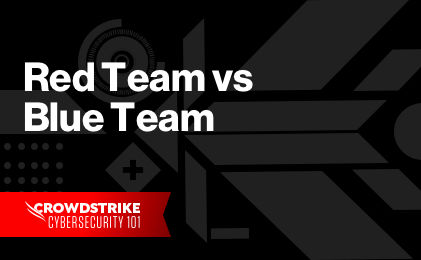What is a purple team?
A purple team is a group of cyber security professionals who simulate malicious attacks and penetration testing in order to identify security vulnerabilities and recommend remediation strategies for an organization’s IT infrastructure. The term is derived from the color purple, which symbolizes the combination of both red and blue teams.
Unlike traditional red team/blue teams, which are usually separate entities, the purple team works in close coordination, sharing information and insights in order to address acute weaknesses and improve the organization’s overall security posture.
Purple teams vs. red teams vs. blue teams
The table below outlines the differences between purple teams, red teams, and blue teams.
| Red Team | Blue Team | Purple Team | |
|---|---|---|---|
| Who | Offensive security experts or ethical hackers who act as adversaries | Incident responders and analysts trained to defend an organization's environment | Members of the offensive (red) and defensive (blue) team working in unison |
| What they do | Attack an organization’s cybersecurity defenses using real world tools, tactics and procedures (TTPs) | Identify, assess and respond to the red team’s attack TTPs | Simultaneously test and defend the organization and its assets |
| Why | To identify gaps and weaknesses within the client’s IT environment that adversaries may exploit during an attack. | To test an organization's cybersecurity defenses and IR playbooks | To improve the overall security posture and preserve the health of the organization over both the short- and long-term |
Advantages and benefits of purple teaming
Purple teaming offers the same benefits of red teaming/blue teaming. In short, it allows organizations to actively test their existing cyber defenses and capabilities in a low-risk environment. Conducting a red team/blue team exercise allows the organization to:
- Identify misconfigurations and coverage gaps in existing security products.
- Strengthen network security to detect targeted attacks and improve breakout time
- Raise healthy competition among security personnel and foster cooperation among the IT and security teams
- Elevate awareness among staff as to the risk of human vulnerabilities which may compromise the organization’s security
- Build the skills and maturity of the organization’s security capabilities within a safe, low-risk training environment
However, implementing a true purple team strategy that brings together both the red and blue teams as one unit, offers additional benefits. These include
- Enhanced protection through continuous feedback and knowledge sharing between a united offensive and defensive team
- Consistency of testing, delivered through the continuous engagement of the purple team
- Common goals between the red and blue teams
Get started with CrowdStrike Advisory Services
Adversaries are constantly evolving their attack TTPs, which can lead to breaches going undetected for weeks or months. At the same time, organizations are failing to detect sophisticated attacks because of ineffective security controls and gaps in their cybersecurity defenses.
CrowdStrike offers variety of services, including tabletop exercises, adversary emulation exercises, and red team/blue team exercises, to help organization assess their security posture and prepare for real-world attacks.
To learn more about these services, please visit the CrowdStrike Advisory Services page.





